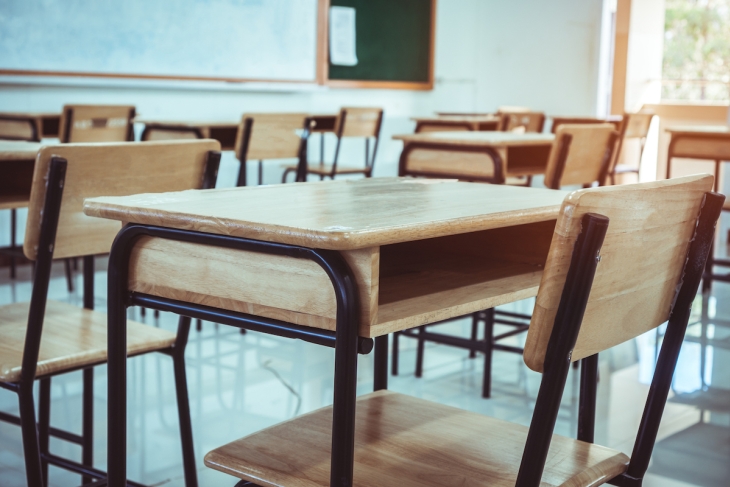During the first full school year after the onset of the Covid-19 pandemic, enrollment in U.S. public schools fell by about 1.1 million students, or 2 percent of prior K–12 enrollment. A recent study by Thomas Dee and three other Stanford University researchers examines how school reopening decisions affected those declines, as well as what they reveal about parents’ instructional preferences.
They use federal data to gather district enrollment counts from 2015–16 through 2019–20, but because the federal government has not yet released district by grade-level enrollment data for the 2020–21 school year, they collect those data directly from state departments of education. Their sample includes traditional districts but not charter schools unless authorized by a traditional district. They also use district-level opening plans aggregated by Burbio, a digital platform used by more than 80,000 schools nationwide to power their yearly calendars. In the pandemic, Burbio tracked instructional mode status for roughly 1,200 districts at various points in time by school and grade level through special agreement with them. The Stanford team’s analytic sample—which relies on Burbio’s sampling strategy—ultimately encompasses 35 percent of all public school students and is more urban and suburban compared to national statistics, while also including slightly higher concentrations of poor students. Analysts also track Covid-19 prevalence at the county level and state decisions around Covid-related restrictions, such as stay-at-home orders and public transportation limitations, which could influence school instructional mode and parents’ perception of Covid-19 risk.
Descriptively, results show that half the districts chose remote-only instruction, while 27 percent chose in-person and 23 percent chose a hybrid model. The authors employ a comparative interrupted time series design that helps control for the fact that remote-only districts tended to be larger and more urban and already showed decreasing enrollment patterns preceding the pandemic.
The headline finding: The decision to offer remote-only instruction in fall 2020 contributed materially to disenrollment from public schools. Specifically, their estimates show that offering remote-only instruction exacerbated disenrollment by 42 percent (i.e., a change from 2.6 to 3.7 percent) relative to in-person instruction, while hybrid instruction had small and statistically insignificant effects. To frame these effect sizes against the national decline in public-school enrollment, Dee and his team explain that public schools previously enrolled roughly 49 million students and that roughly 57 percent of students faced remote-only instruction as of November 2020. The additional enrollment decline in remote-only districts implies that public schools lost roughly 300,000 K–12 students as a result of these decisions. Which suggests that widespread adoption of remote-only instruction explains roughly a quarter of the disenrollment from public schools. They also find that the effects of remote-only instruction on the decline in public-school enrollment were particularly concentrated in the kindergarten and elementary grades. Remote instruction did not appear to influence middle or high school enrollment—nor contribute to dropout behavior—nor did hybrid instruction have an impact either way.
Interestingly, the effect of disenrollment relative to remote instruction in districts serving higher concentrations of Black students was nearly twice as large as in districts serving lower concentrations of Black students, a finding consistent with survey evidence that Black parents disproportionately supported remote learning.
As for the future, the analysts say that the sharp drop in kindergarten enrollment could be an especially thorny problem. A substantial number of kiddos whose parents redshirted them to avoid fully-remote learning likely started kindergarten this fall (assuming that some or all of it was in-person), creating an unusually large mixed-age cohort. That will usher in unusual and unexpected staffing requirements as the cohort makes its way through the system together over the next twelve years. But let’s be honest: That’s just the tip of the iceberg relative to the changes required to help students recover in the wake of the pandemic.
SOURCE: Thomas S. Dee et al., “The Revealed Preferences for School Reopening: Evidence from Public-School Disenrollment,” Annenberg Institute at Brown University (August 2021).


